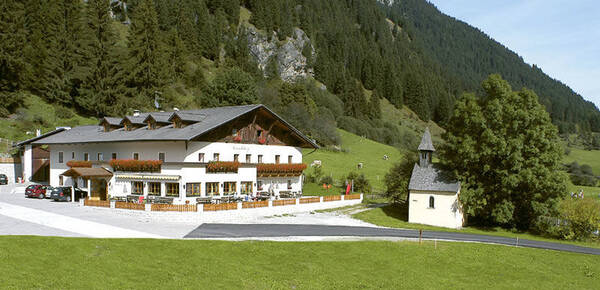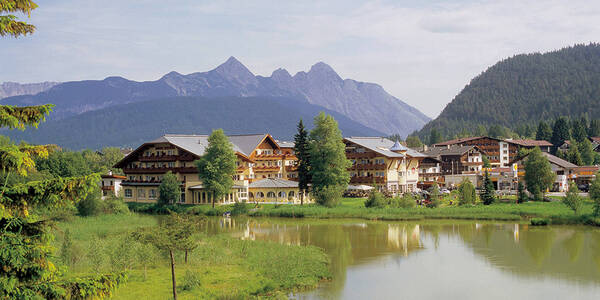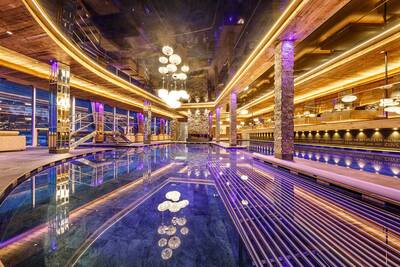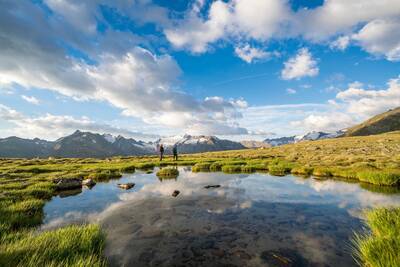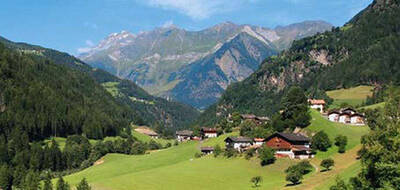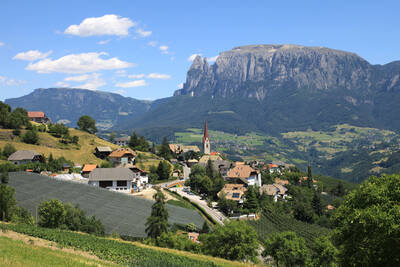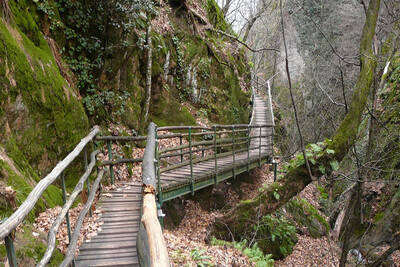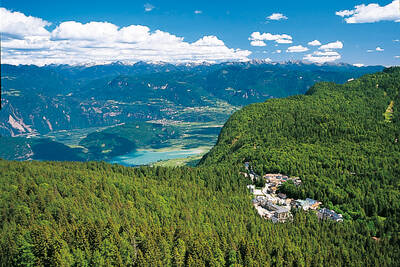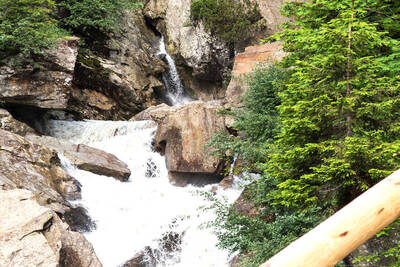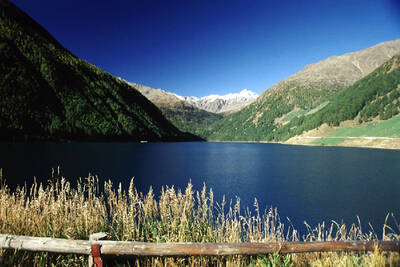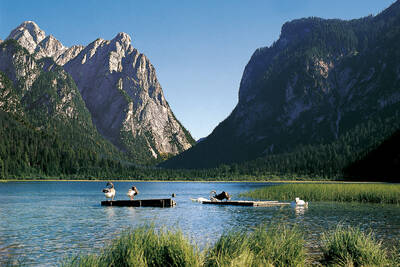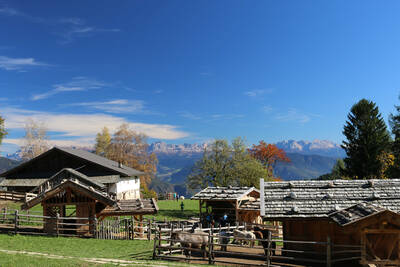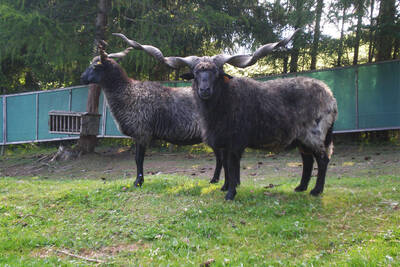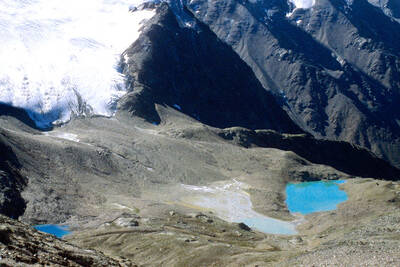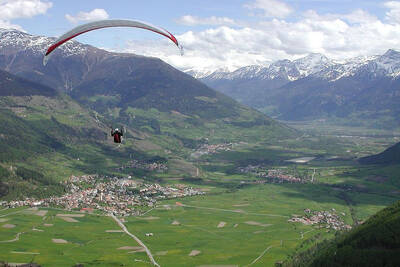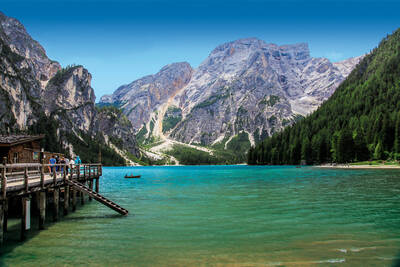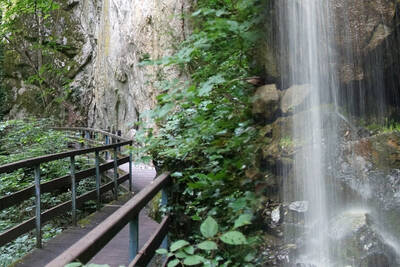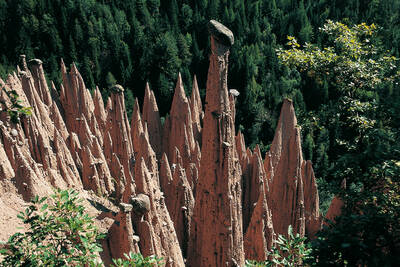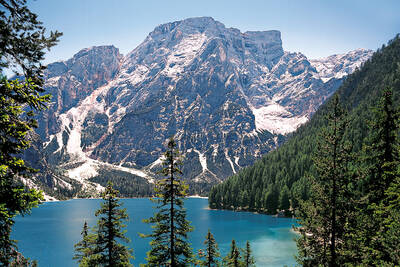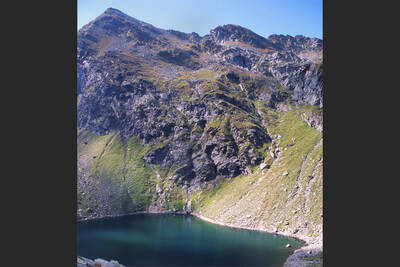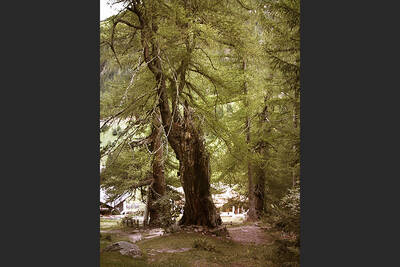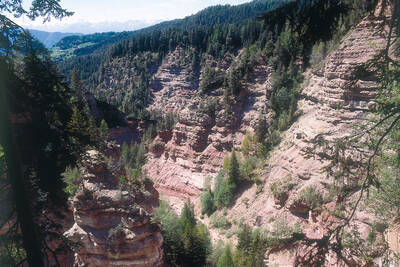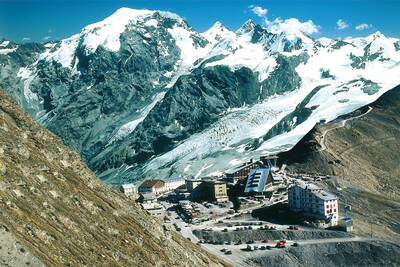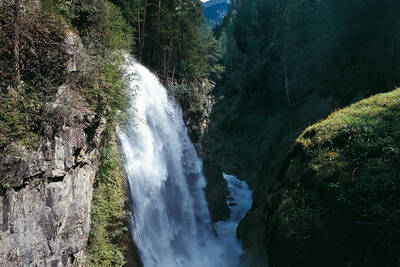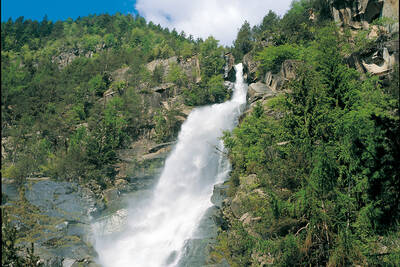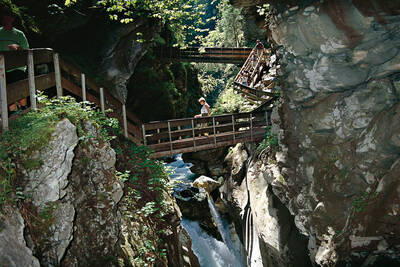Obernberger Lake
The Obernberg Valley, a side valley of the Wipptal near the Austrian-Italian border at the Brenner Pass, is one of the most pristine valleys in Tyrol. A trip to the fantastically beautiful Obernberger See is an experience at any time of the year.
Obernberger See - Photo: NH53 - CC BY 2.0
In the middle of the landscape protection area of the Tribulaune, at an altitude of 1,594 m, lies the Obernberger See. It covers an area of around 20 hectares and actually consists of two parts, which were separated by a rockfall in prehistoric times. Only in the spring, when the water level is very high after the snowmelt, are these two parts connected. On the land bridge or peninsula formed by the rockfall, there is a chapel that can be reached via a footbridge. The picturesque little church is dedicated to 'Our Lady of the Lake' and was erected in 1935, the same year that the Obernberger See was declared a nature reserve.
The lake is fed underground by the Obernberger Seebach, which also drains underground. Only when the water level is high is there also an above-ground outflow. The Seebach consistently has water quality class I and supplies the community of Obernberg with drinking water.
Obernberger See has always been a popular excursion destination. Idyllically situated at the foot of the Kleiner Tribulaun, surrounded by spruce and larch forests, far away from hustle and bustle and everyday stress. The completely natural landscape is charming in every season and captivates with its primeval beauty. Trees and mountains are reflected in the clear water, which sparkles emerald green in the sunlight and sparkles like a jewel. Wooden boats invite you to a leisurely rowing trip, and in the inn with a sun terrace directly by the lake, you can enjoy a hearty snack.
Even Emperor Maximilian I liked to come here from his Innsbruck residence for hunting, and even then the lake was famous for the quality of its trout. Fish farming had become the second economic pillar of the valley in the early modern period, after the copper mining flourishing in the late Middle Ages had to be discontinued due to lack of profitability. The protection of the fish stock is also the reason why bathing is not allowed, although the water of the mountain lake is usually much too cold anyway. A hiking trail leads around the lake, and tours to the surrounding peaks can also be started from here. In winter, the area is excellent for snowshoeing.
 How do you like the content of this page?
How do you like the content of this page?
Please give us your feedback!
Recommended accommodations
Racines
★
The Pichlerhof in Racines/Ratschings offers you cozy, modern and comfortably furnished vacation apartments in a prime location.
Racines
★★★
Our hotel in South Tyrol, the Larchhof in Racines, offers all the ingredients for a restful and relaxing wellness vacation in South Tyrol. It lies embedded in a picturesque landscape of alpine meadows and forests, enjoying the mild climate of the Southern Alps. Our hotel in Vipiteno is a true paradise if you want to de-stress and get away from your everyday worries.
Seefeld in Tirol
★★★★
On the sunny plateau of Seefeld – surrounded by the mighty Tyrolean Alps and shady forests lies the Hotel Seespitz-Zeit.
Vipiteno
★★★
The feel-good hotel Sterzinger Moos is the ideal place for a relaxing vacation or a relaxing stopover on a trip to the south!







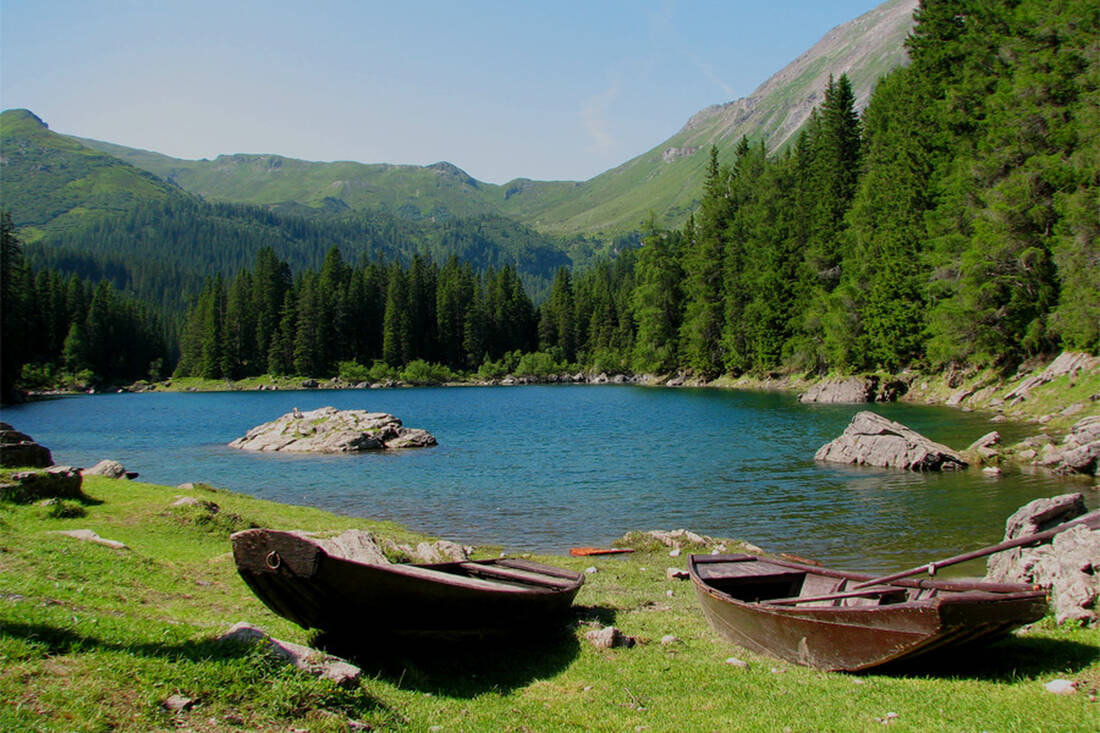
 How do you like the content of this page?
How do you like the content of this page?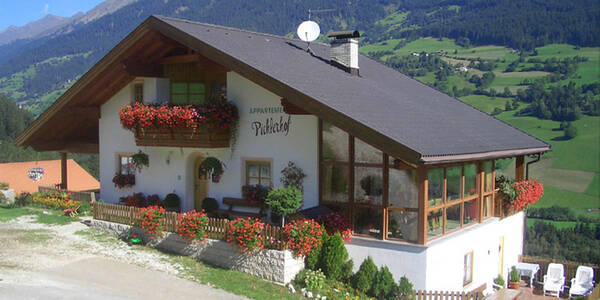

 notice
notice